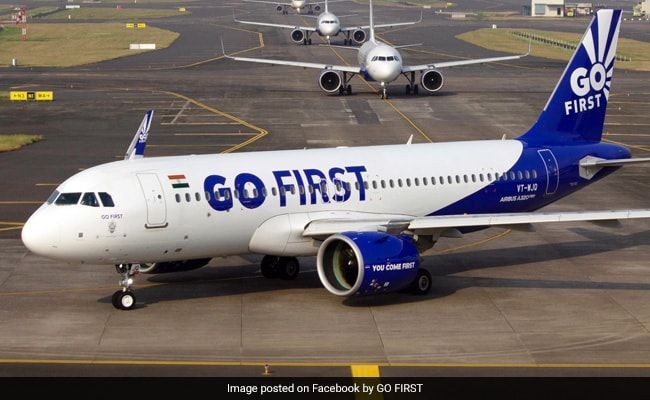Despite challenges on the global front, corporate earnings for the quarter ended March 2022 remained strong. India Inc.’s profitability remained high throughout the quarter, supported by the finance and automotive industries.
The Q4FY23 performance of the automotive industry was excellent, driven by a significant volume increase across categories. However, because of a decline in exports, two-wheeler volumes were small.
During the quarter, the overall revenue of automakers increased by almost 22% YoY, driven by strong volume growth and price increases. The quarter’s adjusted net profit climbed by almost 44% year over year.
Earnings before interest, taxes, depreciation, and amortization (EBITDA) rose by almost 37% on an operational level as a result of moderated commodity prices, operating leverage, and favorable foreign currency effects. According to estimates, gross margin increased sequentially for the third straight quarter.

The majority of vehicle firms’ management, nevertheless, predicted a steady raw material trend in the foreseeable future. While the majority of OEMs anticipate the broad-based recovery to occur only in H2FY24, they are beginning to observe signs of recovery in specific markets for the slowing exports.
Examining the Q4 results
The largest automaker in the nation, Maruti Suzuki India, reported a consolidated net profit of $2,670.8 billion for the quarter ending in March, increasing 42.4% year over year from $1,875.8 billion. Due to a volume rise of 5.3%, its overall operational revenue climbed 19.85% YoY to 32,059.6 crore.
With a combined net profit for the quarter of $5,407.79 billion compared to a net loss of $1,032.84 billion year over year, automaker Tata Motors outperformed expectations. The Q4FY23 PAT increased about 83% sequentially. The company’s top line increased by more than 35% YoY to $1,05,932.35 crore.
Due to the robust demand from India and improved supply at JLR, Tata Motors reported that volumes kept improving. Better ASPs and better revenue growth were the results of pricing decisions and a more varied mix. Strong gains in margins and earnings were made possible by decreasing inflation, a stronger product mix, pricing adjustments, and advantageous operational leverage.
In the fourth quarter of FY23, Mahindra & Mahindra (M&M) recorded a standalone net profit of Rs. 1,549 crore, an increase of 22.1% YoY. Its automotive business recorded a 35% increase in standalone revenue to 16,400 crores. Volumes for the firm in FY23 increased by 50% to 698,000 units.
The largest two-wheeler manufacturer in the world, Hero MotoCorp, reported a gain in standalone net profit of 36.77% to $858.93 crore while revenue increased 12% to $8,307 crore. The car major’s margin increase and profitable growth in the quarter were aided by price, savings, and mix.
Bajaj Auto, a manufacturer of two- and three-wheeled vehicles, recorded a net profit of $1,433 billion in Q4FY23 compared to $1,469 billion in profit year over year, a 2.5% decline in a single digit.
According to domestic brokerage company Motilal Oswal Financial Services, upgrades for FY24E were made in Q4FY23 primarily to account for the advantages of declining raw material prices, which helped margins and provided commentary on the sequential increase in export demand.
According to the brokerage company, there were increases in EPS for Bajaj Auto (+7%), Hero MotoCrop (+5%), Tata Motors (+13%), and Escorts (+7.5%) among automakers.
MUST READ – RBL Bank introduces the 8.5% interest ACE Fixed Deposit Scheme.
Road ahead
Analysts predict that demand for commercial vehicles would stay steady, but that demand for passenger cars (PV) will likely drop after reaching record levels in FY23. Recovery in the two-wheeler market is anticipated to be driven by stable urban demand and rural recovery. Additionally, the anticipation of a typical monsoon will boost demand for tractors.
The future performance of car firms is anticipated to be driven by improved chip supply, prolonged demand recovery, and decreasing commodity costs, according to Motilal Oswal.
We prefer commercial vehicles (CV), which are supported by strong demand and a stable business climate. We think the CV cycle will continue to develop strongly in the future. According to the statement, “We favor firms that have a stronger likelihood of a demand rebound, a solid competitive position, profit drivers, and balance sheet strength.
In the meanwhile, research from small case management PrimeInvestor.in predicted that the auto industry growth in FY24 will be more evenly distributed across all categories, although at a mid-single-digit rate.
Strong rural recovery may even encourage greater growth for small vehicles and 2 and 3-wheelers, pushing total growth for these categories into the single digits. Small finance banks, NBFCs, and micro-finance institutions have made a significant comeback, contributing to the restoration of the lending cycle in the rural economy, the research stated.



